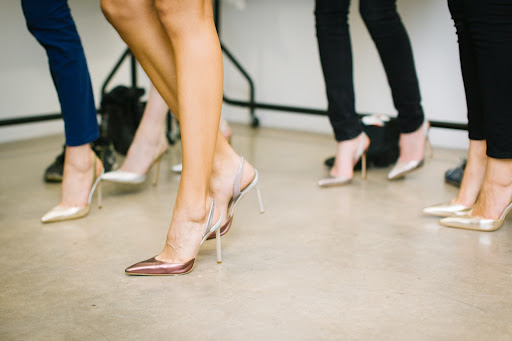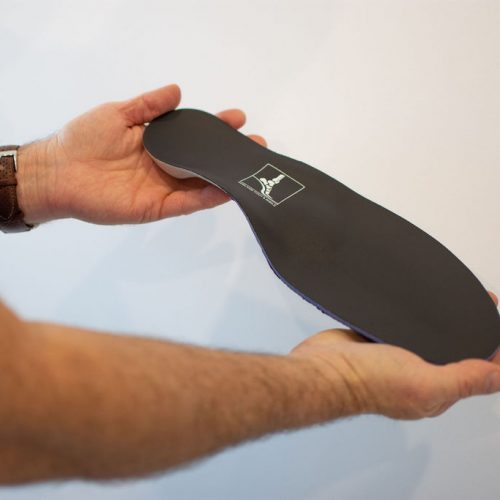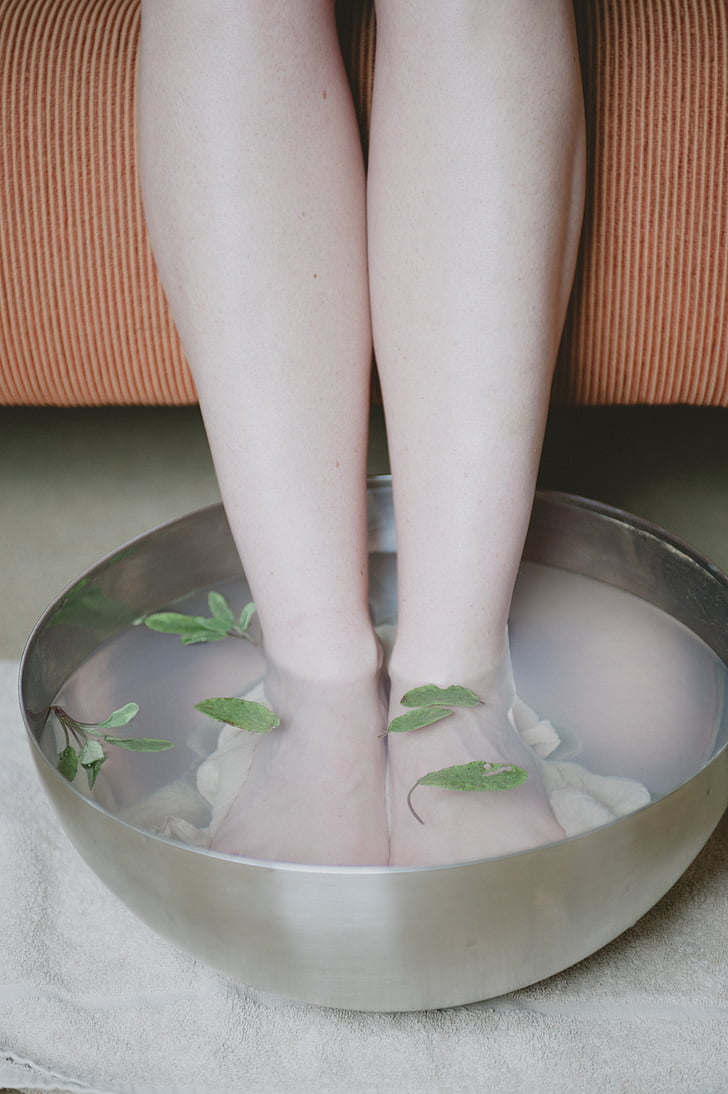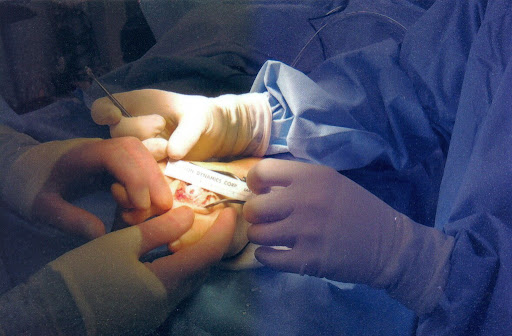Here at Adelaide Foot and Ankle, one of the most common questions our patients ask us is: Can bunions be corrected without surgery? Well, there are several ways we can treat bunion pain without surgery.
Generally, non-surgical bunion treatments should be the initial methods to consider before anything else. Bunion surgery should only be the last resort.
You see, between home remedies and a bit of help from a podiatrist, there are effective ways to find pain relief. And depending on the condition of your bunion and pain levels, nonsurgical treatments may be all you need to relieve pain.
In this post, we’ll have a look at what bunions are, the signs and symptoms, and what causes them to develop. We’ll also discuss a few nonsurgical treatments and determine conclusively if treating bunions without surgery is possible.
Can You Correct Bunions Without Surgery?
A bunion, which is a bony bump at the base of your big toe, does not go away on its own and in fact, will get worse over time, but there are remedies one can do to relieve the pain.
When the bones at the base of your big toe are out of alignment, the big toe tends to bend towards the second toe. The resulting protrusion or bony bump is what’s called a bunion, which doctors call a hallux valgus.
Walking or moving puts too much pressure on the toe joint at the base of the big toe, causing severe pain. Consequently, wearing shoes can be painful when the toe joints have become stiff and sore.
Bunions are more common in adults; women are more likely to develop foot problems than men. Moreover, those with stiff joints or rheumatoid arthritis are more prone to developing bunions and might experience foot pain much earlier.
What Causes Bunions to Develop?
Although more studies are needed to determine the exact cause of bunions, it has been observed that this foot problem often runs in families. Bunions are also the consequence of wearing tight-fitting or narrow shoes.
People in certain professions are also more prone to developing bunions and other foot problems. Ballet dancers, teachers, nurses and other people whose work involves standing most of the day are more at risk of experiencing pain and discomfort associated with bunions.
Can Bunions Be Reversed or Corrected?
A bunion won’t go away on its own. If left untreated, it may continue to get worse over time. This foot problem can only be reversed or corrected through bunion surgery.
That being said, there are many instances where surgery is not necessary. There are several home remedies that are effective at providing bunion pain relief.
7 Non-Surgical Treatments for Bunions
Many non-surgical treatments help slow down bunion formation. Whilst these methods provide bunion relief, they don’t address the underlying condition, which is the misalignment of the first metatarsal bone, ligaments and tissues at the big toe joint.
1. Wear Comfortable Shoes
Wearing comfortable shoes can provide bunion pain relief. The use of supportive shoes helps alleviate pain and discomfort and slows down bunion formation.
Wearing comfortable footwear, especially those with a wide toe box, can help relieve bunion pain. You’ll need to go up in size, though. Ill-fitting shoes can force your toes to rub together, leading to more pain and swelling.
Women should avoid wearing pointed-toe shoes and high heels as these types of footwear are notorious for putting more pressure on bunions and toes.
2. Consider Orthotics for Bunion Treatment
Orthotics are shoe inserts that provide arch support. They help improve foot mechanics, comfort and alignment.
Orthotic shoe inserts can help with the proper distribution of weight on your foot, reducing pressure on the big toe. You can purchase over-the-counter orthotics from chemists in your area. But a better option would be to visit a podiatrist for custom orthotics.
3. Use Footwear Accessories to Reduce Swelling and Pain
Assistive footwear accessories can also help protect your bunions and help reduce pressure on the toe joints. Whilst such devices can’t correct bunions, they can, at least, help reduce pain as you go on with your day-to-day activities.
Bunion Pads
These are gel-filled pads that cover and cushion the bunion and other pressure points to prevent irritation.
Bunion Correctors
Bunion sleeves or correctors are devices that you can slide onto the ball of the foot and the big toe. Like bunion pads, sleeves prevent the bunion from rubbing the inside of the shoes. Their design makes them more stable than bunion pads.
Whilst such devices may help alleviate bunion pain, they can’t correct misaligned bones and ligaments inside your foot.
Bunion Splints
Bunion splints are quite similar to bunion sleeves. These assistive devices wrap around your foot and the big toe to help reduce bunion pain. A bunion splint can put your big toe in its proper alignment, albeit temporarily.
But unlike bunion sleeves, these splints can’t be worn with shoes. For this reason, bunion sleeves are best worn at night.
Bunion Toe Spacers
As their names suggest, these devices create a space between the big toe and the second toe. They keep the big toe in its proper alignment and prevent it from rubbing with the second toe.
4. Foot Exercise and Rest
Exercise is a great way to develop muscular strength, improve foot mobility and ease bunion pain. Toe curls and marble pickups are foot exercises that can help treat bunions. Rest is also necessary for managing bunion pain.
5. Take NSAIDs to Reduce Inflammation Associated with Bunions
Inflammation is one of the body’s natural responses to an injury and a common symptom of bunions. Taking non-steroidal anti-inflammatory drugs (NSAIDs) can provide quick bunion relief by easing both the swelling and pain.
However, NSAIDs are not recommended for long-term use with patients suffering from certain chronic conditions. Thus, you must speak with your physician before taking such drugs.
6. Give Your Feet the Right Combination of Hot and Cold Therapy
Hot and cold therapies have always been beneficial for a wide range of medical conditions, and suffering from bunions is no exception.
Cold therapy can compress the blood vessels to help bring down the swelling. It can also provide a bit of relief to the other toes that get irritated due to the rubbing associated with bunions.
On the flip side, heat therapies help sore joints and muscles relax. They also help improve circulation or blood flow. Soaking your feet in warm water can help ease the soreness and cramping of the muscles and joints in the affected area.
If you want to try hot and cold therapy but don’t want to get your feet wet, using an ice pack or heating pad can provide a similar therapeutic effect. Elevating your foot above your heart while using an ice pack can enhance the anti-inflammatory effect.
7. Maintain a Healthy Body Weight
Your feet are already under pressure by supporting your body as you stand and move everywhere you go. Being overweight can put more pressure on your feet, giving you more trouble with your bunions over time.
How to Know When It’s Time for Surgery
If home remedies don’t seem to help and the pain goes on and off for more than a year, your podiatrist may recommend surgery to get rid of your bunion. Surgery is the only solution to remove your bunion and completely stop the pain. Another reason why you may need surgery is to prevent complications that can lead to other foot problems such as bursitis and hammertoes.
Speak with a Specialist at Adelaide Foot and Ankle for Bunion Treatments
You don’t have to struggle to find the right bunion treatment on your own. The podiatrists and podiatry team at Adelaide Foot and Ankle are always ready to answer your questions about bunions and other foot problems. We’ll help you create a personalised bunion treatment plan so you can return to your active lifestyle as soon as possible.
We usually provide non-surgical treatments such as custom orthotics or shoe inserts. But if surgery is necessary, our friendly podiatrists will walk you through the process and help you prepare.
Take the first step towards bunion pain relief. Schedule an appointment with your Adelaide podiatrist today!
FAQs
What happens if you don’t remove bunions?
Leaving your bunions untreated can lead to arthritis, especially if the big toe joint has endured considerable, long-term damage. Over time, bunions can cause the cartilage in the big toe joint to deteriorate.
How can I fix my bunions without surgery?
You can fix your bunions without surgery by wearing comfortable footwear, especially those with wide-toe boxes. You can also wear orthotics or shoe inserts, which are devices that help distribute weight evenly and reduce the pressure on the big toe.
Do bunion correctors really work?
Bunion correctors prevent the insides of the shoes from rubbing with your bunion, preventing irritation. However, they don’t correct misaligned bones and ligaments inside your foot.








